While you might think spring is the optimal time to plant many vegetables and herbs, September and October are also ideal, especially if you’re interested in enjoying fresh food from your garden over the next two seasons. You can plant many things in your garden during autumn, including herbs! Check out this list of the 10 best herbs you can still plant in September, including harvest times.
1. Parsley
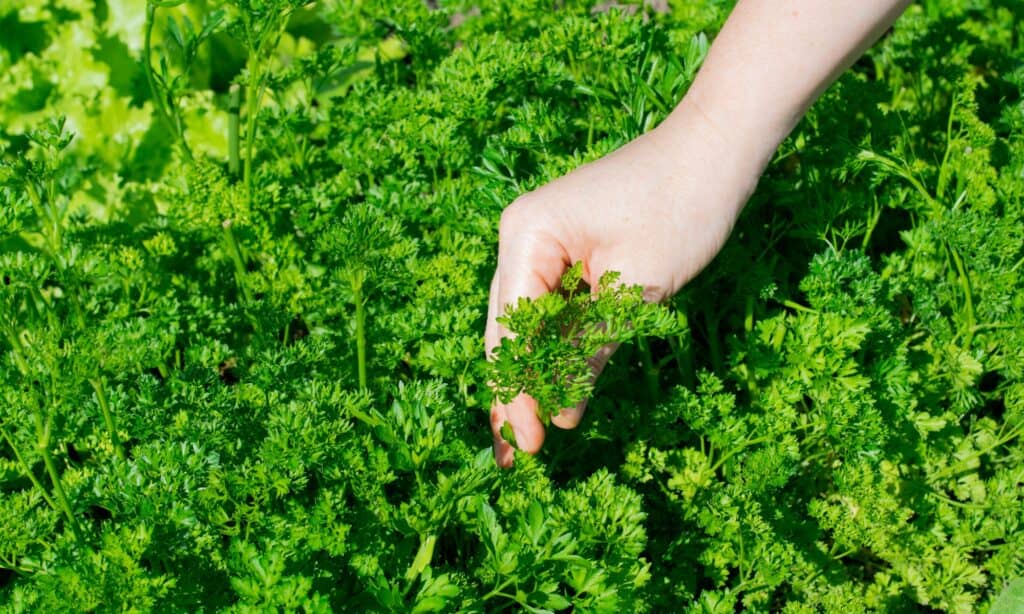
Parsley easily survives the cold winter months without damage.
©iStock.com/Oksana Chaun
As an annual herb, September is one of the best times of the year to plant parsley. This fresh, peppery herb will mature and be harvestable throughout the fall and winter, and because it’s very hardy, parsley can easily survive the cold winter months without damage. If you plant parsley in the fall, it will be in full bloom by May or early June.
2. Sage
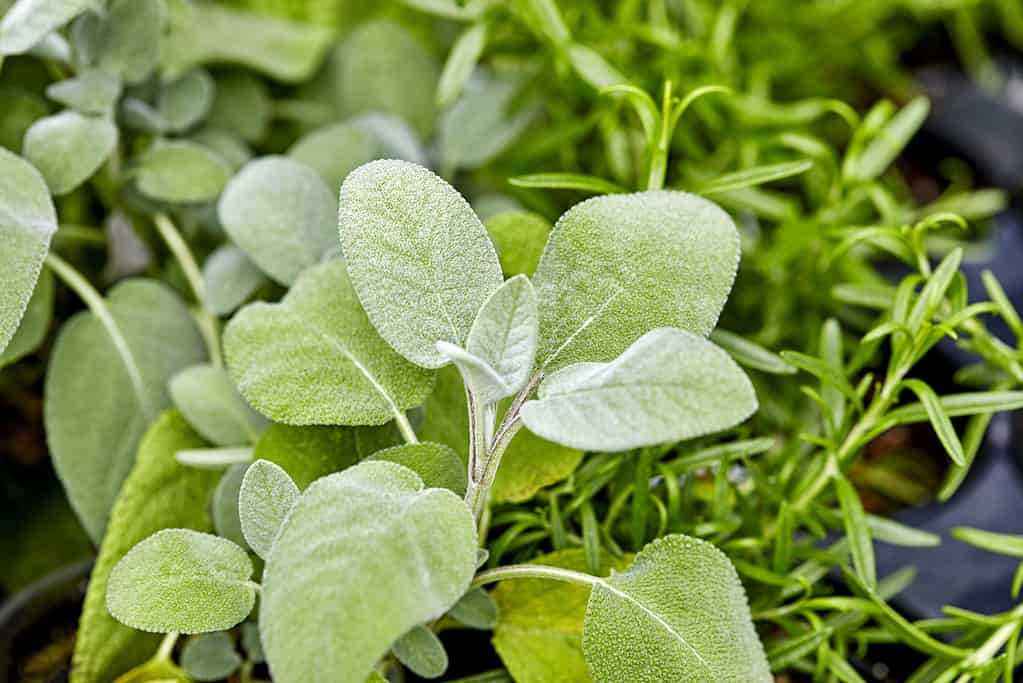
Sage grows best in cool weather, making it one of the best herbs you can still plant in September.
©iStock.com/wingedwolf
You can plant sage in either spring or fall, as it does best when grown in cool weather. Ideally, you should plant sage two weeks before the last spring frost or up to two weeks before the first frost if you plant in the fall. Sage grows best in full sun with very light shade. It also needs well-drained soil. Clay pots work great for sage because they dry out easily.
3. Chervil
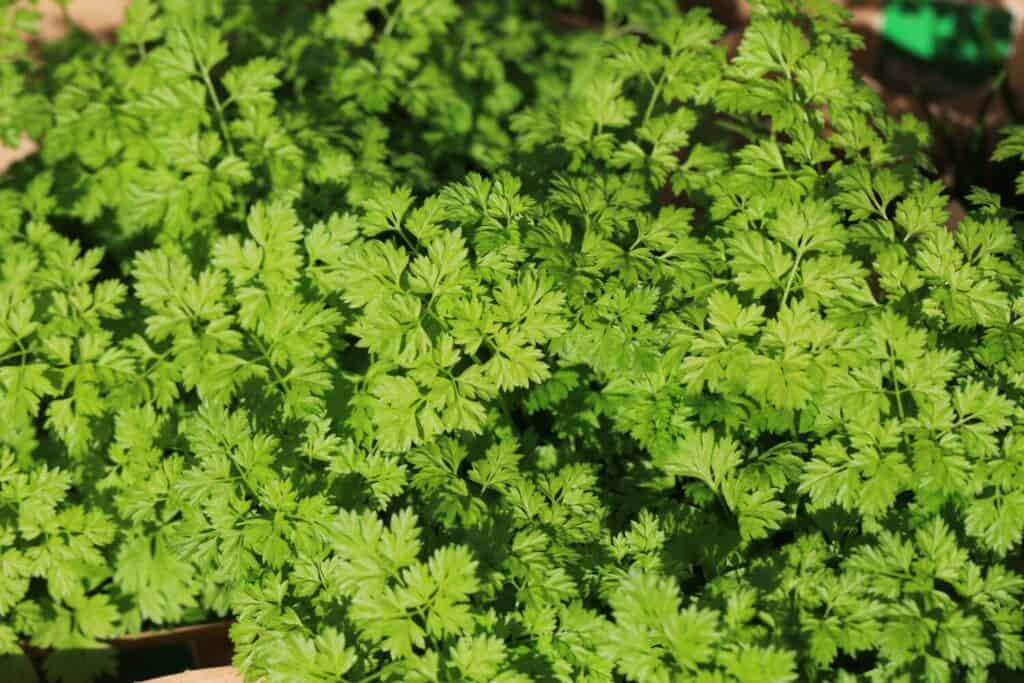
Plant chervil 60 days before the first frost.
©Traveller70/Shutterstock.com
Reminiscent of parsley and tarragon, chervil is a delicate cool-weather herb that you can sow indoors or outdoors. Because chervil can become bitter when grown during hot weather, late August and September are perfect months to get them in the ground. If you sow it outdoors in the fall, ensure you plant them around 60 days before your region’s first expected frost.
4. Rosemary
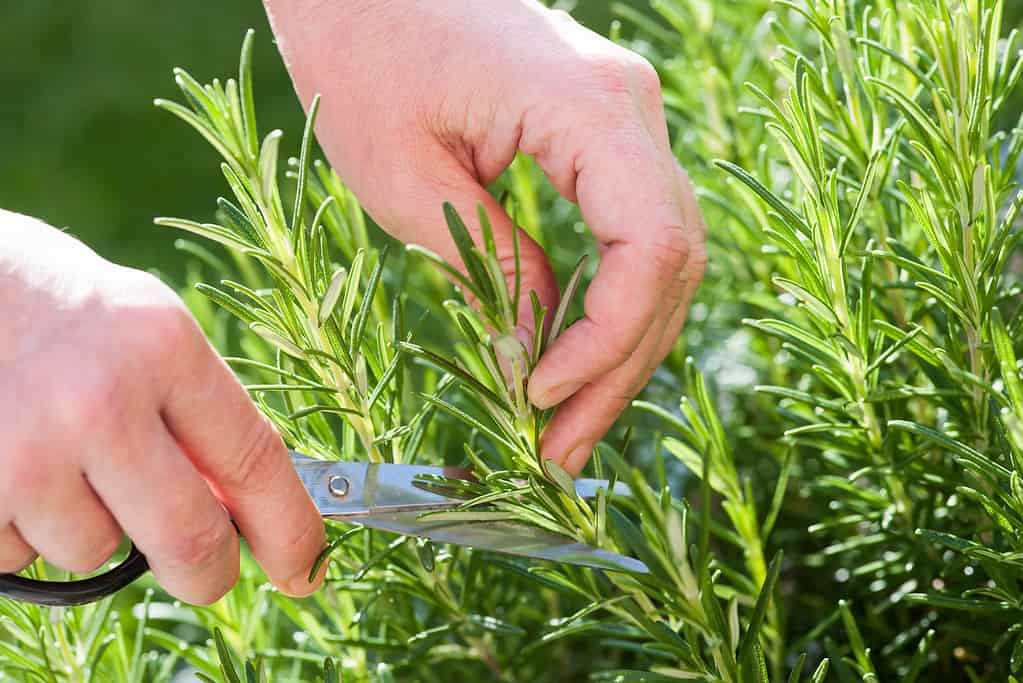
You should plant rosemary in a sunny spot.
©AlexRaths/ via Getty Images
You can plant rosemary in the ground during spring or fall. This aromatic herb is frost-hardy, but cold temperatures combined with over-watering can damage immature plants. To keep them growing well, plant them in a sunny spot with well-drained soil. You can also dig in bark or leafmould for better drainage. While you can harvest this herb throughout the year, rosemary grows more actively during the spring and summer.
5. Cilantro
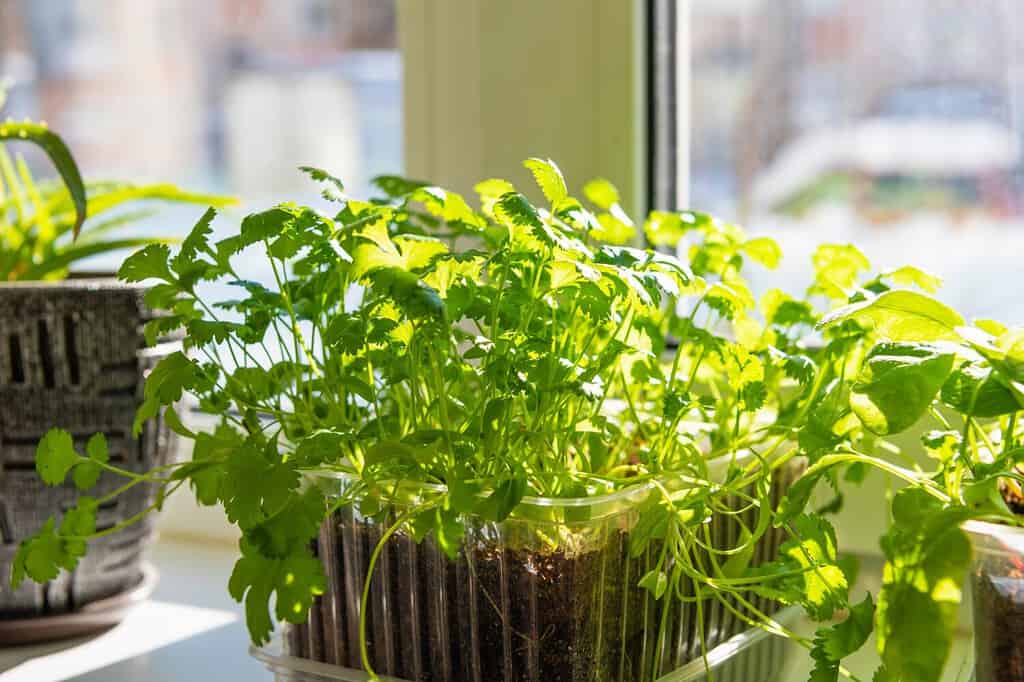
Cilantro does best when planted in spring or fall.
©Valeriia Duggan/Shutterstock.com
This fresh herb prefers cool weather, so it’s best to plant cilantro in the spring or fall. You can either plant them in February for a spring crop or in September for a fall crop. Cilantro doesn’t like the heat of summer, but it does need full sun to grow. It also does well in containers planted in rich, well-drained soil.
6. Thyme

Thyme is drought-tolerant and likes full sun.
©pilialoha/Shutterstock.com
This small perennial shrub is native to the Mediterranean and is popular for its earthy, minty flavor that livens up many tasty recipes. Thyme is a worthy addition to your herb garden, and you can plant it in early spring or late fall. This herb is drought-tolerant and likes full fun. You can harvest it periodically throughout the growing season, spring, and summer.
7. Marjoram
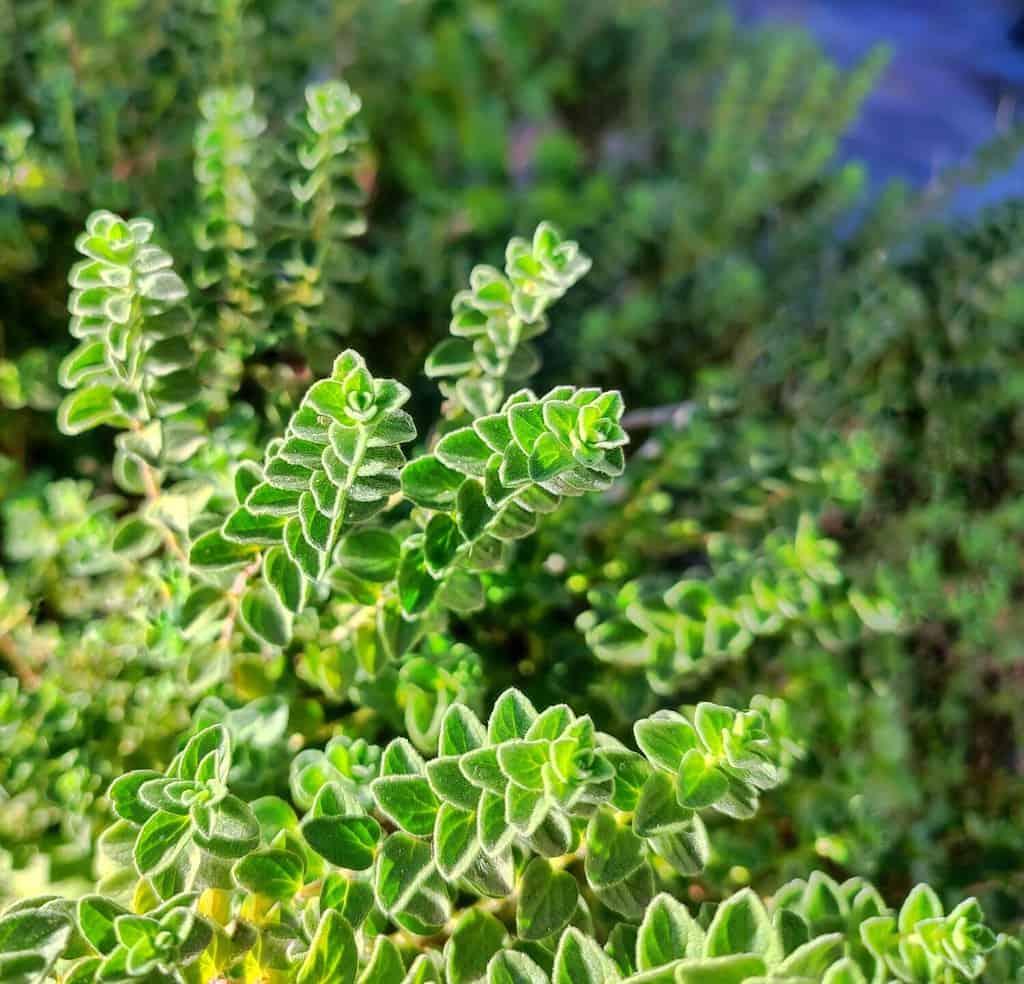
Marjoram grows well in containers or as ground cover.
©The_AA’s/Shutterstock.com
The best times to plant marjoram are two weeks after your last spring frost or eight weeks before your first fall frost. You can sow its seed either indoors or outdoors, and it grows well in containers or as ground cover. You should space plants at least 12 inches apart in an area that gets full sun. Be sure to provide rich, well-drained soil.
8. Chives
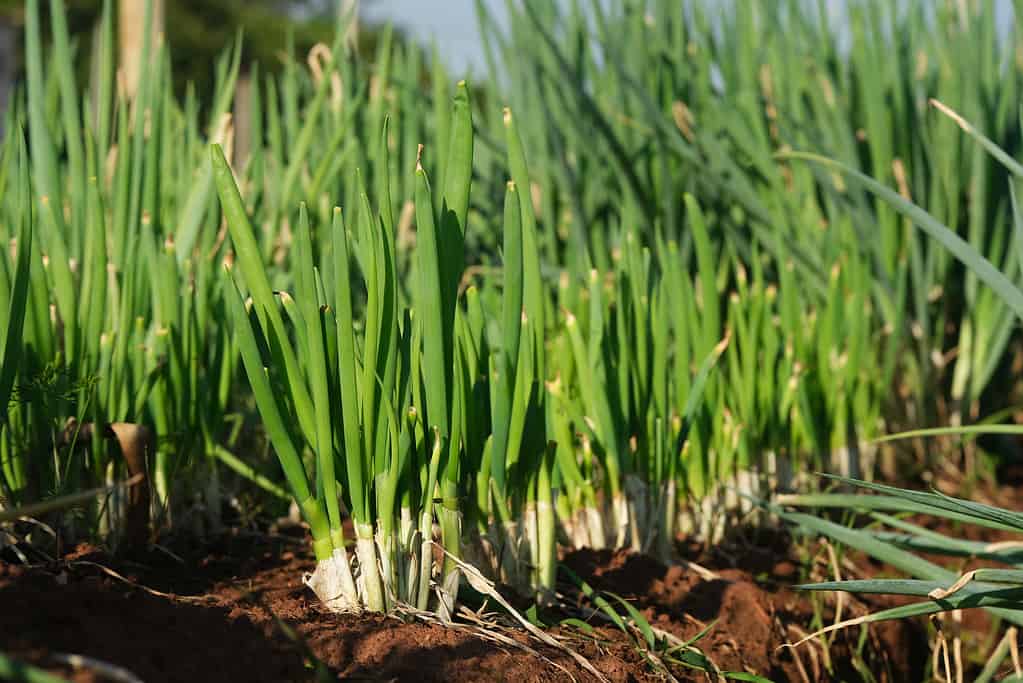
You can plant chives as a border plant in your garden.
©JR Slompo/iStock via Getty Images
Chives taste like a mild mix of onion and garlic and are an excellent herb to have on hand. This perennial plant can be planted eight weeks before the first fall frost as it is considered a cool-season crop. Chives make an excellent border plant in your garden, and you can harvest them just 60 days after seeding. You should harvest this plant three to four times in the first year.
9. Mint
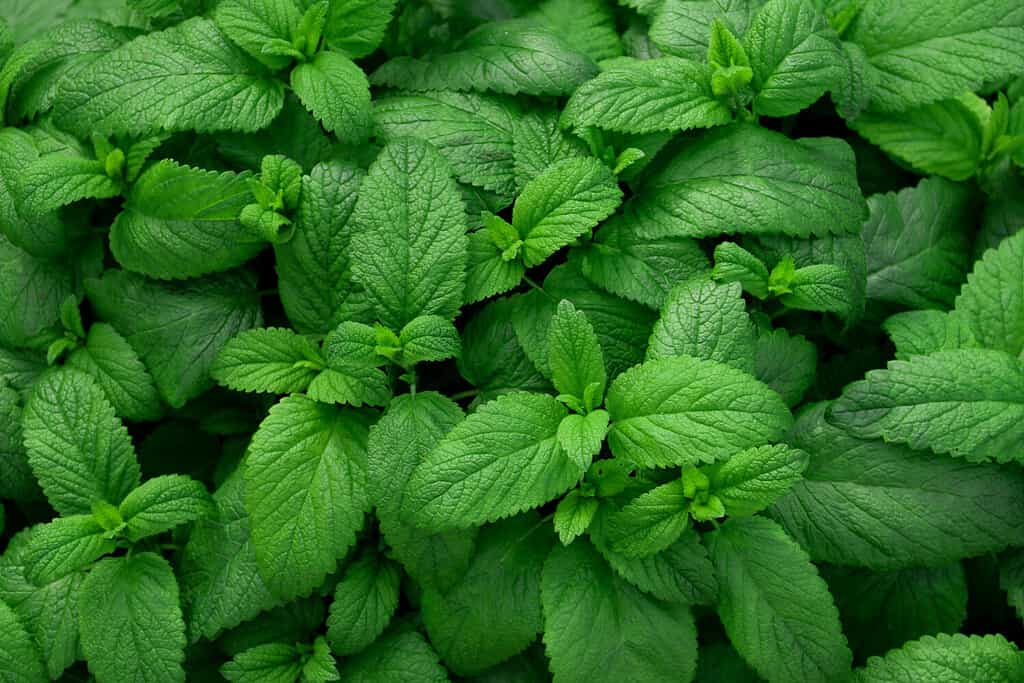
You can grow mint from root cuttings or young plants in the fall.
©Olesya Myzzz/Shutterstock.com
Mint is a versatile plant that can be planted anytime until around two months before the first fall frost. You can also keep them indoors and harvest them year-round. You can easily grow them from root cuttings or young plants in the spring or autumn. Be sure to plant them in light shade, where the roots can stay moist without becoming waterlogged.
10. Lavender
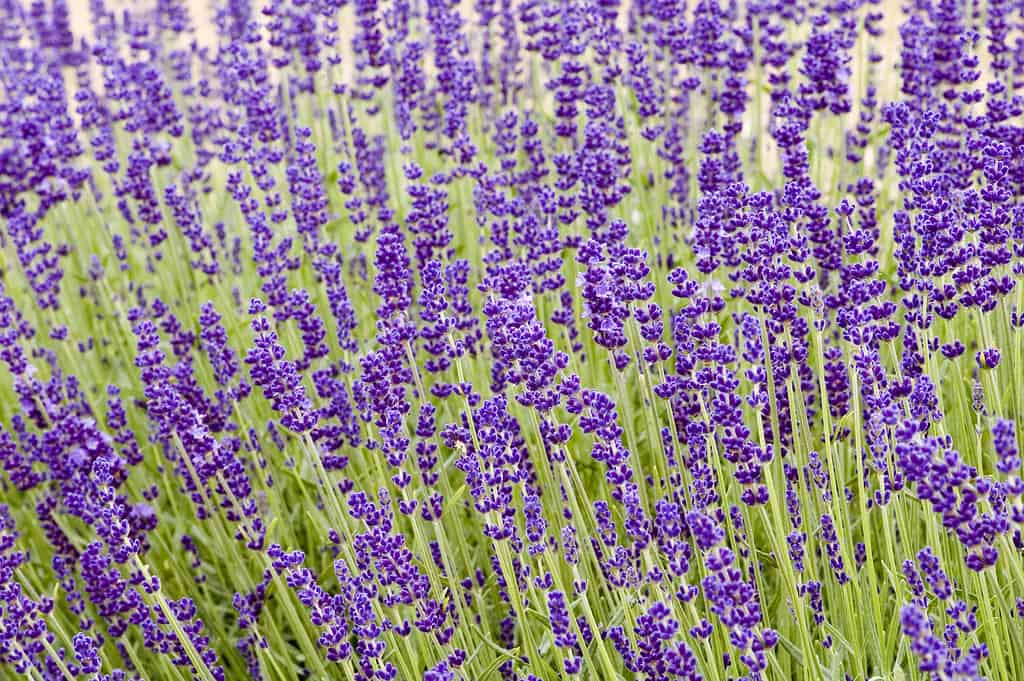
Lavender needs eight to 10 weeks to get established before the soil get too cold.
©gardendata/ via Getty Images
While April is the optimal time to plant lavender, you can also get them in the ground in September so they can root out before fall. Ideally, lavender needs about eight to ten weeks to get established before the soil gets too cold. You can harvest lavender in late fall, around the first frost, or very early spring.
A Recap of the 10 Best Herbs You Can Still Plant in September
| Number | Herbs You Can Still Plant in September |
|---|---|
| #1 | Parsley |
| #2 | Sage |
| #3 | Chervil |
| #4 | Rosemary |
| #5 | Cilantro |
| #6 | Thyme |
| #7 | Marjoram |
| #8 | Chives |
| #9 | Mint |
| #10 | Lavender |
Thank you for reading! Have some feedback for us? Contact the AZ Animals editorial team.








